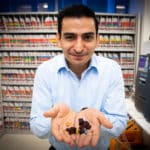For the past decade scientists have been able to reprogram skin cells, nasal cells and other mature cells to become pluripotent stem cells that can turn into any cell type in the human body. How it works is only starting to become clear.
Teams led by Professors Ryan Lister at the University of Western Australia, Jose Polo at Monash University and Ernst Wolvetang at The University of Queensland are working together to understand how this process occurs, whether all cell types follow the same path to becoming pluripotent cells, and if this impacts their ability to mimic disease in the laboratory.
Through a series of collaborations over the last ten years the scientists have uncovered a number of stem cell secrets, opening the door for more targeted research and, ultimately, treatments for diseases. Continue reading How reprogramming cells turns back time →
















